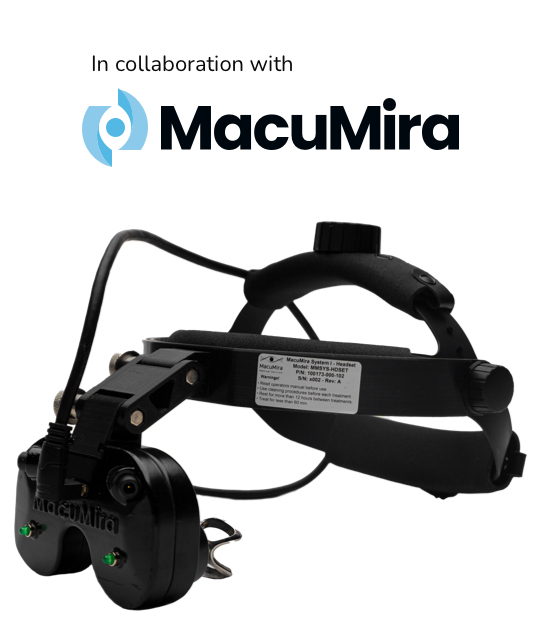As an eye care professional, you’re well aware that a strong online presence is essential for success. But what are the best strategies to enhance your SEO and visibility on the web?
Search engine optimization (SEO) is a key part of your website’s ability to convert viewers to patients. Search engines drive the bulk of web traffic. So being in front of people searching for eye care should be a priority for your business.
Marketing4ECPs is your resource for website optimization and your one-stop shop for all things concerning eye care marketing.
Here are 10 steps to improve your SEO strategy and have your website rank higher for online searches.
Step 1: Make Sure Each Page Stands Alone
Break out your website into various pages for each eye care service you provide. Don’t just have one page that lists all of your services. Create a distinctive landing page with content tailored to each specific optometry service or resource. Google can determine what each page is about and rank it more appropriately in search results if you do this.
Every page of your website should:
- Focus on structured data (code that search engines like to read).
- Ensure that the title, URL & description are accurate and include keywords.
- Be designed for people first and foremost.
- Include localized elements that target your regional market.
- Have clearly defined page titles (ie. “Adult Eye Exams in San Diego”).
Make Metas Work for You
Meta titles and descriptions are the parts of a web page that tell search engines what the page is about. These are important for SEO and influence whether or not your site will be displayed in search results. Meta title and descriptions are the text you see when web pages are listed on a search engine results page (SERPs).
When creating your page titles and meta descriptions, be sure to keep the following in mind:
- The title should be between 55 and 65 characters long.
- The meta description should be between 150 and 160 characters long.
- Use keywords where possible, without being too spammy.
- Be sure to write for humans, not a search engine.
Step 2: Create Meaningful Content
Meaningful content is content that people want to read and that they’ll find useful. Google and other search engines rank web pages based on their relevance to a search query. Simply having keywords on a web page isn’t enough; the content and context must be interesting and purposeful.
Producing relevant, quality content should always be your focus. Skyscraper content is your best-performing content and should be showcased. Improve on these web pages, update them, and continue to promote them.
Try to follow these guidelines with all your website content:
- Answer the searcher’s query with compelling content.
- Include location tags.
- Make sure your content is original and unique.
- Avoid thin content and duplicate content.
- Invest in long-form content.

Prioritize User Experience
A positive user experience (UX) will keep people on your website longer and reduce bounce rates (people that leave a page without taking any action). This is a key factor in improving SEO. UX that makes it easy for people to navigate your site and find the information they want is very important for improving your search ranking.
There are several things you can do to improve the user experience on your web pages:
- Use engaging visuals.
- Make sure pages load quickly.
- Create mobile-friendly websites.
- Optimize for voice.
Step 3: Provide Free Learning Resources
Give free information to your patients. Providing expert information is a primary way to build trust in your brand. Newsletters, blogs, and eGuides all help potential patients access the information they may be looking for. This not only increases downloads and shares on social media but also allows you to demonstrate knowledge by giving useful material.
This is content that is frequently being clicked, shared, or downloaded. Free resources you provide should always:
- Include share-worthy content that earns links, citations, and amplification.
- Add value to your website.
- Be easy to share across all platforms.
Step 4: Claim Your Local Business Listings
It’s a great idea to have other businesses link to your website, but make sure only reputable sites are doing so. Using local directories is an excellent method to raise the visibility of your optometry practice online. Claim listings on Google My Business, Yelp, Yahoo! Local, Bing, and other platforms if possible.
Your directory listings should always include the following:
- Your practice name
- Address
- Phone number
- Website URL
- Email address
Step 5: Mobile Optimization is a Must
It’s no secret that the majority of people use their smartphones to browse the internet. That is why your optometry practice must have a responsive website. Without one, you’re missing out on more than half of your potential patients! If your site isn’t mobile-friendly and takes too long to load (more than 3 seconds), visitors will quickly navigate away from your site.
You can improve your mobile site speeds by:
- Compressing images before uploading
- Removing unnecessary plugins
- Minimizing redirects
- Enabling caching

Step 6: Add Video Content
Video content on an eye care website can help boost visits and improve rankings. Video material is an excellent approach to keep people engaged, and Google likes websites with videos. Make certain that your videos look good on all screen sizes using a responsive design.
Some best practices for adding videos to your website are:
- Ensure it is accessible to everyone (include captions, described video, a video transcript).
- Use an interesting thumbnail.
- Add a meta title and description.
- Make videos the focus of a page
- Have your video hosted on YouTube.
Step 7: Research Relevant Keywords
One of the most important steps in any SEO strategy is keyword research. Keywords are what people type when they are looking for an answer online. This involves finding the right keywords to target for your website and then optimizing your content and web pages around those keywords.
There are several tools you can use for keyword research, but Google’s Keyword Planner is a good place to start. Some keyword research strategies include:
- Ask yourself how people would search for a topic.
- Find trending keywords.
- Competitor keyword research.
- Use geo-specific tags.
- Learn what questions are being asked about eye care.
Keyword Best Practices
When it comes to keyword usage, you’ve got to be careful. Using keywords incorrectly might have a detrimental impact on your SEO. Don’t “stuff” keywords on a web page. Keywords should be used in your content just as you would normally speak. Here’s are the 3 essentials when it comes to keywords on your website:
- Keywords Should Be Natural
- Keywords Should Be Relevant
- Keywords Should Match the Intent of the Search

Step 8: Use Internal Links Often
Internal links are links that direct users to other pages of your website. They help keep people on your site longer, are a great way to integrate a call-to-action, and show Google that your content is relevant. When you use internal linking, try to link to related service pages or posts with the same topic.
Here are a few tips for using internal links:
- Link to older posts on the same topic.
- Include keywords in your anchor text.
- Link to relevant pages, not just homepages.
- Make sure links are working and lead to the correct page.
Step 9: Activate a Google My Business Account
A Google My Business account can help boost your SEO. With a Google My Business account, you can create a free listing for your optometry practice on Google Maps. Potential patients will be able to discover you easier as a result. The more information you provide in your ad, the better.
Your Google My Business account should include:
- Address
- Phone number and email
- Hours of operation
- Photos of your practice
- Website address
Google My Business accounts are free so there’s no reason not to set this up. Get more information about free google exposure by reading this eGuide.
Step 10: Enrich Your Snippets
Snippets are the groups of information you see about a web page after a search query. They include the meta title, description, and URL.
A rich snippet is a more detailed search result for a certain website or web page. Rich snippets might include images, evaluations, prices, and other information that can assist users in determining whether they want to go to your site. Schema markup, which is specific code that tells search engines what data should be included in the snippet, is used to create enhanced snippets.
There are several types of rich snippets, so pick the ones that are most relevant to your business. The following are some of the top SERP snippets to include or link to:
- Videos
- Reviews
- Images
- Favicons (little square icons you see in a browser)
SEO Strategy for Success
The ins and outs of SEO can be intimidating. But with these ten steps, you’re well on your way to improving your website’s position and visibility.
To learn more about SEO strategy, download our comprehensive eGuide for optometrists and eye care professionals. Marketing4ECPs specializes in helping eye care practices expand their online presence to build their business. SEO strategy is a dynamic field that demands constant evolution and an ability to adapt to new trends. Reach out to our SEO experts at Marketing4ECPs to book a free website audit or to inquire about any other marketing needs.
































